The British sports car? Err, yeah, what about it?
Well, it shouldn’t come as any surprise that the world of the classic English sports car is in absolute shambles. And truthfully, it’s been on the descent for the last some three decades now. Putting aside the great impact of the Jaguars, Triumphs, the MGs and the Healeys through the 50’s, 60’s and 70’s, it would appear that overall, the specialty-manufacture British sports car has never managed to get any lasting footing in the market. And in the last couple of years, small manufacturers such as TVR and Marcos have had to close their shops due to insufficient funding and high production costs.
And though this situation isn’t exclusive to English sports car manufacturers, it must be noted that it happens an awful lot in Britain. In most cases it would appear that by the time the car is actually put into production, the typical company itself has little to fall back on in the way of resources and therefore is not able to withstand even the smallest of financial storms.
Additionally, the fact that most English sports manufacturers have the reputation of producing cars that are notoriously unreliable certainly doesn’t help to paint a proper (and healthy) image.
But what if you wanted to have something both built and designed in Britannia, but without the common downfalls of shambling quality, infrequent reliability and terrible engineering? Well, in that case, there are a few exceptions. The first being a fantastic vehicle called the Invicta S1 As I happily noted in the article, this is one of the very few English sports cars which manages to “do it all” correctly and beautifully.
Though, as good as the Invicta may be, it’s most definitely not the absolute best of Britannia. Oh no, that prestigious award rightly belongs to a company established in Dorset, England in 1995. The company is called “Ascari”, and their vehicles are not only amongst the best supercars from the United Kingdom, but in the world.
And like many great marques before it, the company has a substantial amount of history behind its nameplate. Had you not already guessed, the name was in fact named in tribute after one of the greatest racing car drivers in the world, the great Spaniard, Alberto Ascari.
Prior to the company actual selling its first production vehicle on the market, Ascari had released a concept car called the “FGT” sometime in 1995. Powered by a Chevrolet Corvette 6.0 litre V8 and styled by Lee Noble (who is now both owner and sole designer of the “Noble” Automotive) it was clear that the company meant serious business.
And shortly thereafter, Norwegian entrepreneur Klaas Zwart – now the sole owner of the company - took great notice of the vehicle and realized its possible potential in the racing scene. And as a result, he took the leap to help fund the company and not only ensure it’s entry into the “FGT” racing class, but ultimately, entrance into the British GT Championships. And it all paid off extremely well, when Zwart – behind the wheel of the FGT, now powered with a Ford V8 – managed to win an event at the Silverstone circuit in the vehicle’s debut season. Following that, the car continued to telegraph it’s greatness when in the British GT Championships of 1997, the vehicle finished a respectable fourth place at Donington Park.

Ascari Ecosse
So then it should be no surprise that after a couple of years of racing success, the company then decided it would look at producing the FGT racing car as a full fledged, road-legal sports car. This eventually lead to Ascari renaming the “FGT” the “Ecosse” and replacing the Chevrolet and Ford V8 engines for a series of BMW V8 power plants with tuning development from Hartge. Earlier Ecosse models had a 4.4 litre 8-cylinder with around 300bhp, while later models benefited from a slightly larger 4.7 lire V8 with around 400bhp; the latter of the two was running naught-to-sixty in 4.1 seconds and boasting a top speed somewhere in the region of “200” mph.
And if technology is what you were looking for, then the fact that the Ecosse production vehicle boasted an aluminium space frame chassis under its all fibre glass body should have made most any sports car techies very happy.
Yet despite all of this promise, only seventeen examples were known to exist; eight of the original seventeen are now said to have been destroyed through racing or as a result of crashes by their private owners.
This transitional period was the time frame in which the Norwegian-born Klaas Zwart decided the he'd take up the Herculean task of actually purchasing the company. He did this, although not without some difficulty, and from thereon, Mr. Zwart's mission was clear: build something not only completely new to the company's image, but ultimately, something truly great. And after some testing with a concept called the "KZ1" in early 2003, the company released its first production supercar some time in 2005.
The first and most notable aspect of the KZ1 is unquestionably the way it looks. While some feel it's too introverted and even lacking in character, I couldn't disagree more. The really interesting thing about the KZ1's design is how cleanly executed it is, in fact. From it's swooping headlamps (which are in fact borrowed from that of a garden-variety Peugeot) to it's compact rear-end with it's quad circular tail lamps and low-set spoiler, it looks more at home in the Porsche factory than at the Ferrari factory; definitely more Carrera GT than Enzo if you catch my drift. I think it's just wondrous - not only compact and clean, but beautiful in all aspects of its design elements.


And there's little doubt that its interior follows the same overall design theme as it's exterior. Rather than being all flashy and flamboyant, the interior of the KZ1 is all about keeping things luxurious and simple, while undoubtedly showing a high degree of sporting intent. And unlike the vast amount of specialty sports car manufacturers - from Britain and elsewhere - the KZ1's interior is not an awful parts bin with shabby quality and an ugly-duckling design. It's clear that once into the interior, engineers and designers aimed at keeping it high-class in nearly all respects, while retaining a special degree of bespoke individuality. Sure, there are few notable and noticeable borrowed parts - such as the Audi TT air vents, the Vauxhall VX220 starter button and the Mercedes-Benz SL55 AMG tacho/speedo - but thankfully, it all looks integrated, and just as thankfully, none of which look cheap. Suffice to say, achieving such a high-quality interior with multiple bespoke parts is not an easy target. It certainly doesn't help to keep the production costs down either, but for Mr. Zwaart, such expense was not an issue. He knew from the start that should he take this company under his belt, there would be no cutting corners.
And in that aspect alone, the Ascari is not your typical supercar. It's not about being brash and over the top, it's about traveling in a style which is understated but still radiates style.
Yet, despite its contrarian philosophy amongst the supercar clan, it's engine is exactly what you'd expect from a true thoroughbred. Further improving upon their connection with BMW for their motors, Ascari was afforded the 5.0 litre 8-cylinder engine previously found in the BMW E39 M5 to power their supercar. It's an engine that in even in standard-build features variable valve timing, 400bhp and needless to say, top-notch engineering. The version in the KZ1 isn't completely standard though - this particular version of the engine has been beefed up for an extra 100bhp bringing the total tally to 500bhp, while the redline has increased from a meaty factory-spec 7k rpm to a screaming 8k rpm. All in all, you can be sure it makes for an entertaining drive, and with its snarling metallic howl, one that's guaranteed to bring a smile to the face of most any enthusiast.


And if performance is your breathless desire, then you need not to worry, the some 1400kg (fully loaded) KZ1 can sprint to 60 mph in just 4.1 seconds, clatter 100 in a little over 8.5 seconds and can easily breach the double-ton.
It all sounds marvellous, but of course, the real test of how good a car actually is translates unequivocally to how it drives on the road. Well, you needn't worry there, either, because the overwhelming consensus (our editor in that number) is that it's fantastic. The positive press from magazines never seems to differ. They all say the exact same thing - the car handles with premium precision; zero roll and pitch. The steering is quick, but not intensely so. EVO Magazine was quoted as saying: "there are hints of Esprit Sport 350 in its clean, crisp and tightly controlled roll and pitch, and as Lotus engineers were involved in the car's development this shouldn't come as a surprise". Its AP-sourced brake calipers do their job so well in terms of fending off any wear and tear, and it's suppleness through it's finely tuned chassis makes for an confidence-inspiring drive. In fact, that's where the KZ1's character comes to light. Unlike the vast majority of supercars which have a tendency to bite back, the Ascari manages to always stay controlled and well-planted; rarely does it feel as if it's going to spin out of control. It manages to bring the great goods without the touchy-feely attitude expected of most vehicles in this class. It is the opposite of temperamental, and in fact, is confidence-inspiring. It feels like it’s just not going to put a foot down wrong anywhere.
The overall result gives the car a feeling quite unlike anything else. And with the great confidence the car gives through its ability, it makes the car easier to control at the absolute limit – you don’t feel as if the car is conspiring to catch you out on every hard corner. And the track times it's achieved thus far certainly help to back that point up. When EVO magazine tested the car on the Bedford Autodrome earlier last year, it had little trouble keeping up with the best of them. And when Top Gear got their mitts on the KZ1 last year, it ran a lap time on their circuit just a few tenths behind that of the 600bhp Porsche Carrera GT. Its compact size and power-to-weight tactility truly make it a threatening force on any track.
So then, it would appear that the KZ1 is all marvellous and it's true, there are indeed very few categories where it does not succeed in being brilliant. But of course, no car is perfect and the Ascari's biggest vice happens to be its staggering price tag. In the United Kingdom, the vehicle will set you back - thanks to its various bespoke parts, exclusivity and carbon fibre body - £235,000. Now, at first glance that's not too bad considering a Pagani Zonda costs in excess of £400,000, but then reality sets in: the Pagani Zonda has an additional 100bhp to boot. That being said, the KZ1 is probably best compared against vehicles such as the Ferrari F430, Lamborghini Gallardo and Porsche 911 GT2. And after that, it doesn't take long to see the real issue at hand; those three vehicles offer the same power (if not more) and don't even breach £150K. And if you're willing to pay a tad under £200k, which is still quite a bit less than the KZ1, then you can have Lamborghini's flagship - the Murcielago LP640 - which boasts 640bhp (a full 140 more than the English Ascari). The KZ1 is not the pounds-to-performance value leader, that’s for certain.
Though, if you want extra power, and you have a generous trust fund, you can always go with the KZ1's alter ego, named the "A10".

In all intents and purposes, the A10 is essentially a KZ1 on a steady regimen of steroids. As is rather obvious, the vehicle is clearly based upon the KZ1, though is undoubtedly more shout-out-loud and head-turning in its looks. Whereas the KZ1 is calmly executed in its exterior styling, this super-exclusive version (just 50 are planned, with a price tag of £350,000) of the A10 is clearly aimed at clientele who wish they were really racing car drivers. With a low-set front end spoiler, a rather interesting pair of racing-like stripes, a fixed rear spoiler and an undertray more fitting on a race car than on a road car, it's clear that this is a different type of Ascari.
And the interior certainly re-affirms that. Rather being about bespoke luxury, the interior of the A10 is is no way apologetic for lacking any creature comforts. It's a race car equipped with a digital tachometer, an ugly steel steering wheel and patches of unfinished metals and carbon fibre around the cabin. So, it shouldn't come as any surprise that this particular version is not only lighter than the standard item, but considerably more powerful. With a kerbweight of tad under 1300kg collectively working with 600bhp, Ascari claims the A10 will hit the sixty mph mark in a shade under 3.0 seconds.
Now I must admit, I had a slight bit of reservation about this car when I first heard about it. Naturally, I had assumed that when Ascari made the 10, that they'd lose much of engineering finesse that the KZ1 had showcased, but it turns out that I was quite wrong (and happily so)!
The initial press reactions to the car were that it is indeed more hardcore, brash and loud, but that the vehicle hasn't lost any of its overall abilities. Despite the fact that it weighs as just about as much as a loaf of bread, and has a ride decisively more hardcore than the standard model, it still seems to offer the same driving ease. Suffice to say, it’s amazing that they've been able to do such a great blend of performance and driver-friendliness, and only further proves how much work has been put into their vehicles. Ridiculously expensive or not, they're truly wonderful. And that's all that matters to their lucky owners.
Oh, and did I mention that the A10 absolutely murdered every other car Top Gear has ever tested on their test track? (Koenigsegg’s and Zonda’s included). Just thought it might be important.
>>> http://www.ascari.net/
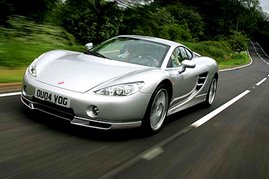
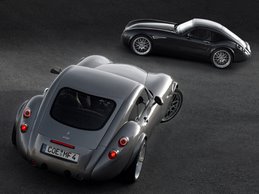
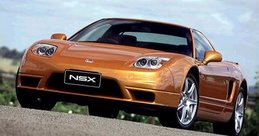
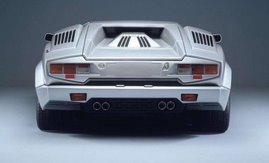

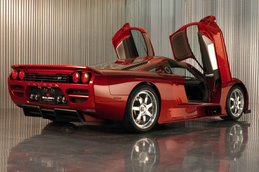
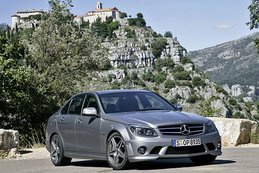
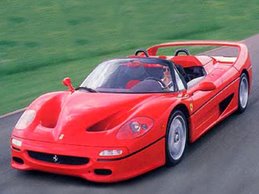

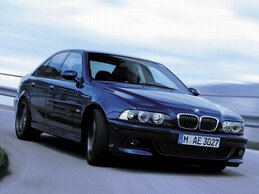



1 comment:
Magnificent article!
Post a Comment